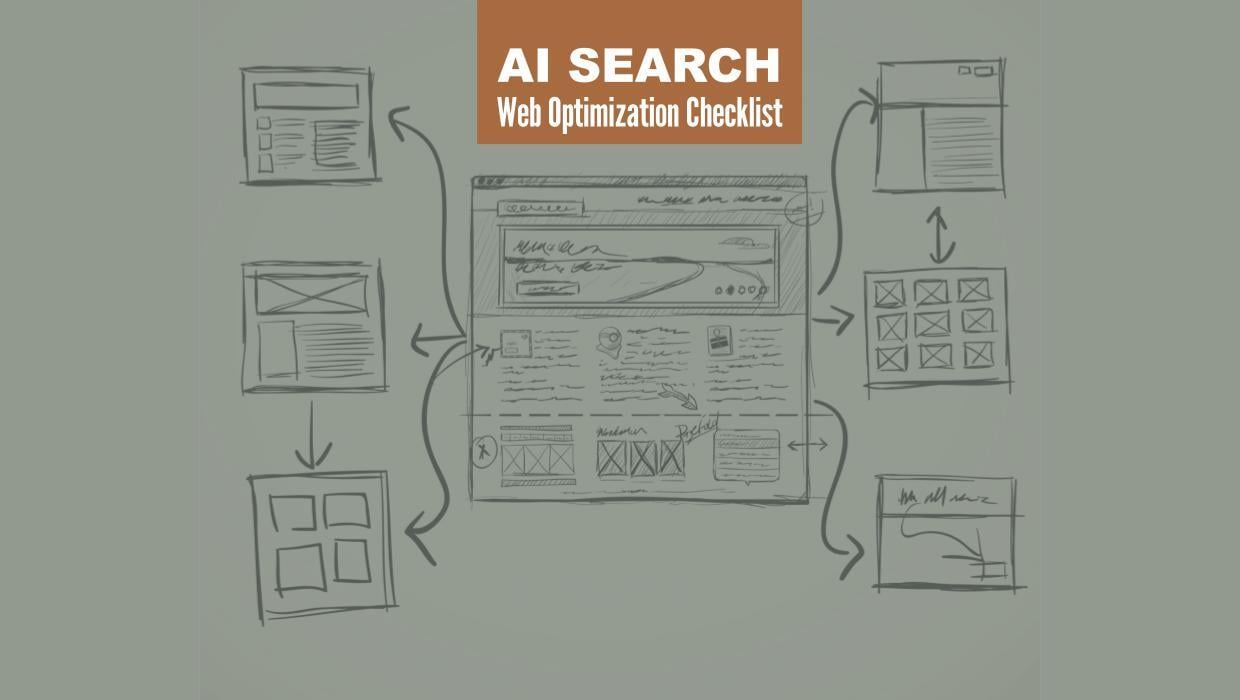Top 11 Tips for Meta Descriptions That Get Click-Throughs & SEO Results
Written by
Generally speaking, buyers are people.
That’s why even (or especially) when writing meta descriptions for SEO, it’s vital that content marketers write for people first, search engines second. That advice applies to meta descriptions for individual web pages, including landing pages and blog posts.
What is a Meta Description? It’s an HTML tag whose text describes and summarizes page content in a compelling way that invites the user to click through and visit. Along with helpful, structured website content, a good meta description can help your page content make it into Google snippets, the most prominent and coveted SERP position.
Meta descriptions used to be a major ranking factor for websites; not anymore, but that doesn’t mean we can ignore them.
In fact, the importance of meta descriptions helps demonstrate how people-first content can move the SEO dial. Google’s John Mueller tweeted back in 2020 that a meta description does not directly serve as a ranking signal — yet it remains an important part of a web page.
In fact, in its 2022 helpful content update, Google offered content creators and developers these clear-as-day instructions for creating content that gets found by users:
- Focus on people-first content
- Avoid creating content for search engines first
An effective meta description connects people with your content. It can give your website an advantage by raising your SERP (search engine results page) position, increasing your click-through rate (CTR), and helping to set visitor expectations so that after they click through, they don’t bounce.
What distinguishes a high-quality meta description from one of the 70% or so that Google rewrites for display in the SERPs? You can find a few basic do’s and don’ts here. You can also follow these 11 tips to craft your own accurate, compelling meta descriptions that spur action:
- Limit meta description length to 160 characters
- Communicate value to your website visitors
- Achieve a friendly, human voice
- Proofread and revise to eliminate errors
- Add a call-to-action (CTA) or offer
- Include a key client, vendor, or industry certification
- Be aware of competitors’ ads
- Opt for non-sentence constructions when appropriate
- Make your meta description long enough
- Avoid duplication
- Test, monitor, adjust, repeat
Craft Outstanding Meta Descriptions in 11 Steps
Just as every web page is created and developed to serve a need, so too is every meta description. But walking through these 11 recommendations is sure to help you hone your website’s presence in SERPs, and invite more searchers to click through.
1. Limit Meta Descriptions to 160 Characters or Less
While Google Search Central documentation states there’s no length limit, most meta descriptions that appear on SERPs are under 160 characters, or they’re cut off somewhere around that length (as in the example below). In our practice, we typically aim for 155 characters or shorter.
Yes, it can be difficult to condense a page’s significance into two lines of text, but the discipline gives you more control over how searchers see you — and first impressions matter. Consider the meta description example below:

If you’re struggling to shorten it up, play with syntax. Switch from singular to plural. Use digits instead of writing out numbers. Acronyms can be OK, too.
2. Focus on Your Page’s Value to the Visitor
Searchers typically have a need, whether it’s a solution to their problem or a dependable source of information. The questions in their mind as they scan search results are, “What’s on this page?” and “Why should I click through?” Your meta description should demonstrate relevance to the user.
Your job is to deliver that answer in a way that stands out against your competition and helps users find exactly what they’re looking for — on your pages, of course. Compare against your competitors’ SERP descriptions and revise until you’re satisfied.
3. Sound Like a Friendly Human
The key is to invite searchers to become visitors. That means crafting 155 characters of text that a human reader finds inviting. Avoid jamming together a string of keyword phrases; even if you manage to rank in the top three results, awkward language in a meta description can signal to a reader that your content wasn’t developed with them in mind — and, in fact, keyword stuffing is a negative ranking factor.

4. Proofread and Revise for Error-Free Text
One of the quickest, surest ways to make your meta description uninviting is to have typos: it looks pretty bad in such a short amount of text, and can make your website look spammy. Needless to say, read and then read it again to make sure there are no mistakes; meta description errors muck up your message and act like a “keep out” sign.
5. Include a CTA in Meta Descriptions
Your page’s meta description basically acts like an ad for your page in the SERPs, and if you’re ranking toward the top of page one, your position is just below paid ads — meaning sales copy is your direct competition. So put your text to work. Incorporating a short call-to-action (CTA) or offer within a meta description is a great way to boost your click-through-rate and stand out in that competitive environment. Here’s an example:

6. Drop the Right Names
If you’re trusted by a leader in a key industry, or have important certifications or accreditation that your target audience should know about, tell them in your meta description for key site pages. Why? You might actually eliminate a preliminary research step for a prospective customer. You’re demonstrating an awareness of their needs and an understanding of their priorities.
Pro tip: be sure to avoid using non-alphanumeric characters when mentioning trademarked brands or certifications, or you risk your meta description being truncated or replaced by Google.
7. Be Aware of Competitors’ Paid Ads
Up to four ads can appear above organic search results in Google SERPs, so the pressure is really on organic search listings to be effective. As your company secures a top position and strives to capture as many click-throughs as possible, keep an eye on Google Ads listings and adjust if needed to stand out from your competitors’ messaging.
Crafting your meta description to be helpful, accurate, clean, and welcoming helps your presence in search results to be a genuine invitation to click through.
Confused about search engine optimization (SEO)? You don’t have to be. Check out our free webinar, Demystifying SEO for actionable, effective ways to drive traffic and improve website performance.
8. Know When Not to Write a Sentence
Not every meta description needs to be written with a subject and a verb. Know your audience and what they’re looking for, and deliver to their needs. If bullet points, a numbered list, or a catalog-like description does the job better, then use those approaches. This can be especially true for product pages. What do searchers want to know?
- Details like manufacturer, model year, and price may be relevant.
- For service providers, contact information and business hours might be top of mind.
9. Make Your Meta Descriptions Long Enough
Under 155 characters doesn’t necessarily mean fewer is better. If yours is less than a line, you’re leaving precious real estate to competitors, and you’re likely leaving out important details. Remember: summarize what’s to be found on your web page, be specific and detailed, avoid robotic lists of keywords, and focus on the needs of your target audience.
10. Make Each Meta Description Unique
You wouldn’t duplicate pages just to have more of them, and if your meta descriptions are too similar or identical, they obviously can’t be as accurate or helpful as they need to be. So keep an eye on all your pages’ meta descriptions and make sure each one is unique. If you’ve got way too many pages, at least try to prioritize key pages and do them justice with helpful, accurate, relevant meta descriptions.
RELATED: Learn all about on-page and off-page SEO tactics with our SEO Survival Guide.
11. Test, Monitor & Adjust
The only way to know what works and what doesn’t is to monitor and track your online marketing efforts, including SEO activities and meta descriptions. Don’t be afraid to experiment and see what works best in your particular industry and niche. Then look for ways to implement what you learn across your website.
Powerful Meta Descriptions Start With Quality Content
Of course, no amount of polishing meta descriptions can make up for lackluster page content. A webpage that wins in SERPs achieves two primary goals:
- It meets the needs of those searching for helpful, unique, high-quality content
- It makes itself easy to find and identify as a quality source of information
You might think of a meta description as a fitting welcome mat, enhancing curb appeal at the virtual front door to your website and attracting visitors, so you can convert them into leads when they click through.
That means making sure the page content does its job, too — and blogging is a great way to continually produce fresh, unique, timely content that answers searchers’ questions and solves their challenges. But just because blogging is effective doesn’t mean it’s easy.
That’s why we’ve created The B2B Business Builder’s Guide to Blogging. This free resource can help you reliably produce better blogs, optimize them for performance, and avoid common problems that can get in the way of your goals. Just click below to download your free copy.
Subscribe To Our Blog
Information. Insights. Ideas. Get notified every time a new Weidert Group blog article is published – subscribe now!
You May Also Like...

Search Engine Optimization
Optimize Your Industrial Website for AI Search

Marketing Technology
Why Unified Data Efforts Fail (and How Manufacturers Can Fix It)

Search Engine Optimization
How Falcon Rebuilt Industrial AI Search Visibility in 2025
Accelerate Your Growth with
Weidert Group
If you’re ready to explore a partnership, request a personalized consultation with our team.

